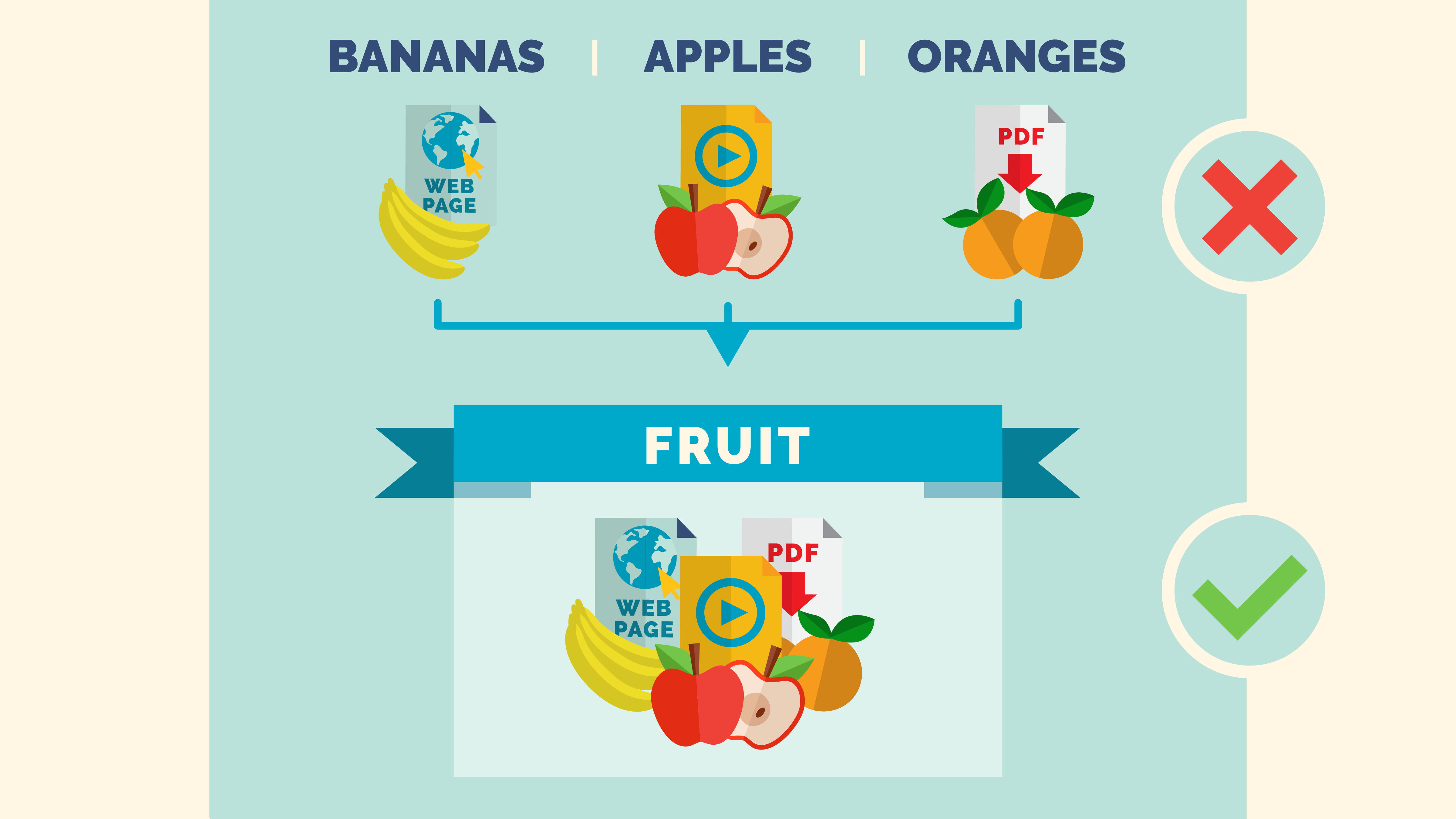Summary
Both Explore Pages and the Topic Sidebar promoter make topic tags public-facing; this allows your visitors to navigate content tracks by following topics of interest. To make the most of these powerful tools, you’ll want to ensure your tagging system is geared towards your audiences.
Adding tags to your content assets is also a great way to organize your Content Library. Tags remind you of the most important aspects of a content asset, and make it simple to create content tracks with consistent themes and topics.
Your Content Library Summary can give you a quick view of your most used tags!
It’s important to continually review and update your tags, but it’s essential to start off with a well thought-out tagging system. Creating tags haphazardly can result in muddled, confusing, and useless tags.
There are no hard and fast rules for creating tags, since the usefulness of tags depends on their context. However, there are some general guidelines that you can follow!
Use language which is familiar to your audiences:
- Your audiences may not use the same wording as you do, so you’ll want to find a way to help your visitors find the topics they’re looking for by using the language that they use.
- If someone is trying to self-educate on a new topic, they might not know the jargon typically used. Try to use tags that are industry-specific, but which can still be understood by a layperson.
- Eg. Referring to apples by their scientific classification “Malus” won’t help visitors find the Apple content they are looking for. Use the tag “Apple” instead.

Don’t have multiple tags referring to the same topic:
- Make sure you’re not using synonyms! Try to pick the most commonly used word.
- Using two tags which overlap will make visitors wonder what the difference is between the two.
- Eg. It wouldn’t be helpful to have a tag called “Produce” if you already have the tag “Fruits and Vegetables.”

Make topic tags broad enough to be used on multiple pieces of content:
- Sure, it’s great to find just the right word to perfectly describe something, but if that topic tag ends up only being tagged on one piece of content your visitors will have a much harder time finding more related content.
- How can you do this? If you think a topic tag is too specific, try to think of what that category could be called one level up.
- Eg. Instead of having one piece of content tagged as “Oranges,” another tagged as “Bananas,” and yet another as “apples,” you could use the tag “fruit” to group all three together.

Keep tags specific enough to actually be meaningful:
- If too many pieces of content are tagged with the same topic tag, it’s no longer an effective tag.
- Eg. If you have too many content assets tagged with “Food,” it may be helpful to get rid of that tag and use more specific topics such as “Dairy,” “Grains,” and “Meat.”

Consistency is key!
- Establishing a regular style for your tags helps visitors quickly learn your tagging system, and will keep your tags from looking messy and unprofessional.
- Eg. Decide whether you will use the singular or plural versions of words.
- Eg. Decide whether you will capitalize your tags or not.

Reminders!
- Tag your content as you’re adding it to your Content Library (extra tip: this is where bulk editing can really come in handy!)
- Schedule regular reviews of your tagging system.
- Eg. If a topic tag is being used too widely it loses meaning, so you may want to break-up that topic into more specific subtopics.
